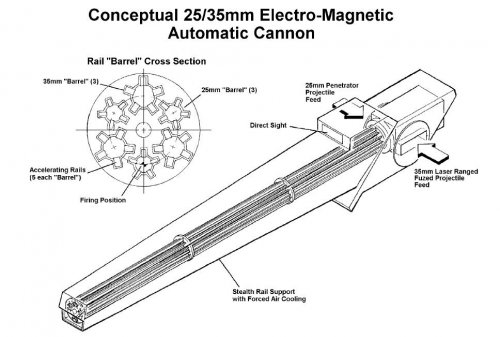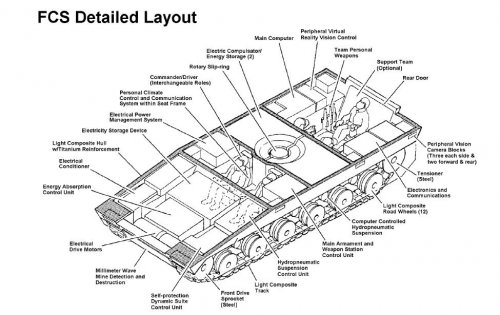The Block III Abrams concept is indeed drying up, due to the M-1A1's success in the Gulf
War (which proves that the design still has a lot of life in it....now as M-1A2), as well as
the breakup of the Soviet Union. However, a lot can change over the next decade.....
The Block III Abrams concept focused primarily on a new main gun (most likely XM-291
140mm conventional main gun), as well as an autoloader to replace the human loader.
Based upon Jane's Armor and Artillery, as well as Steve Zaloga's New Vanguard M1
Abrams book, both Conventional turrets and external guns were considered (the external
gun concept appeared to have 2-3 crewmembers in the hull), as were multiple
Television/Thermal scopes and/or Millimeter Wave Radar Sensors. Millimeter wave radar
enables the gunner to see through thermal blocking smoke and extreme fog. The radar
system also enables the computer to track the outbound round and provide correction
factors, which would mitigate downrange crosswind errors (current crosswind sensors
just detect the wind around the tank, not the wind 1-4 km downrange). The testbeds
used for these concepts were the CCTB (Close-Combat Test bed) and the CATTB
(Components Advanced Technology Test Bed).
A new powerplant, the AIPS (Advanced Integrated Propulsion System) was also looked
at. It would offer an approx. 1650 HP turbine engine in about half the space of the
current 1500 HP model, and would offer fuel savings.
An active defense System, the multiround smoke grenade launcher, appeared similar to
Shtora, but without the Optical Dazzlers. The system focused on detecting enemy laser
rangefinders/designators then firing a Thermal blocking smoke grenade in that direction.
The system could also fire grenades upwards, giving hemispherical 360 degree protection.
This system can be added to all current M-1 tanks.
The Block III tank was axed for the following reasons.
[1] Soviet Union collapsed, which slowed down tank competition.
[2] The 120mm main gun still has plenty of life in it. Take for instance M829A3 and the L55 120mm gun.
[3] The M-1A2 has plenty of life in it and can take many of the above listed upgrades to
make a simpler M-1A3.
[4] Since the Cold War ended, funding is short. Current funds are a "Near term/far term"
mix: M-1A2 SEP and M-1A1D for near term, and the 2 man (or robotic) Future Combat
System for the future. Block III was caught in the crossfire and was canceled.

















